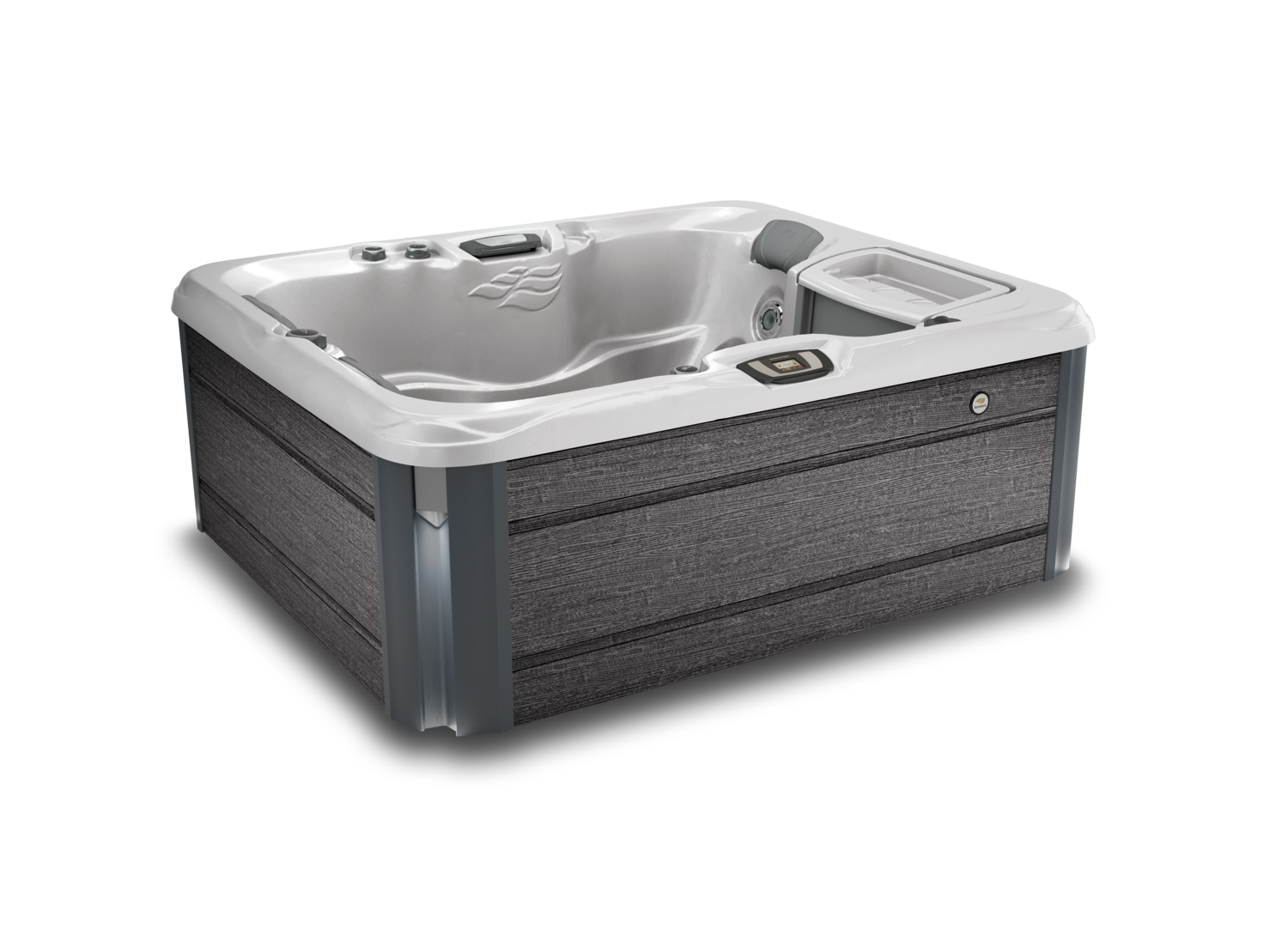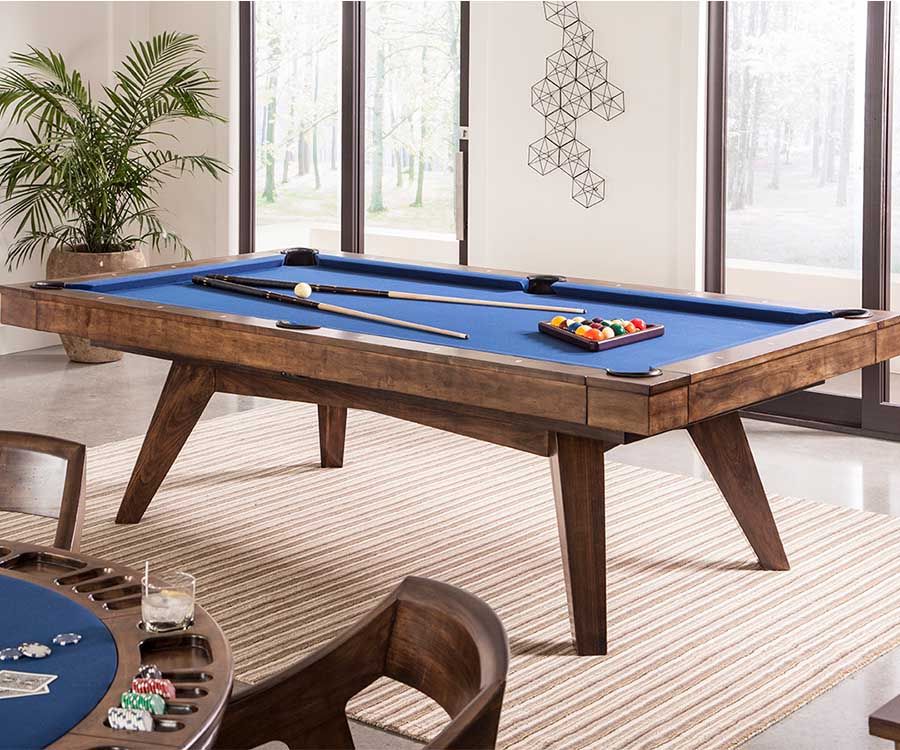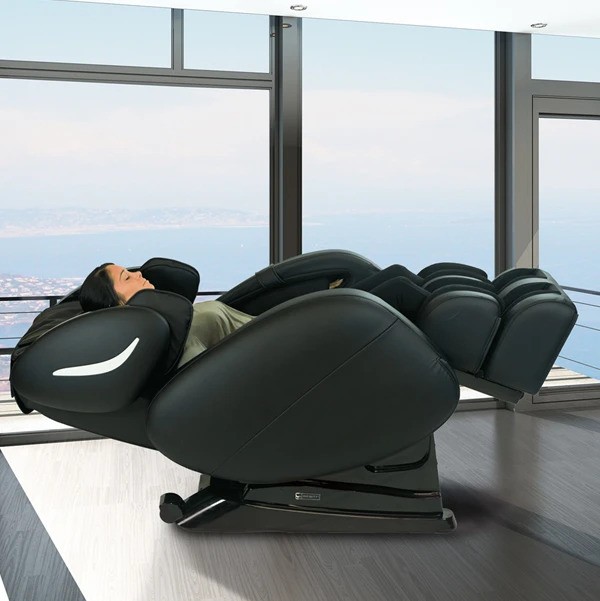Eternally Popular in sports bars and basements, pool is one game that’s lasted the test of time – but it can be intimidating for new players to learn. Online tutorials aren’t always easy to follow and just watching a game isn’t enough to clue you into rules or guidelines.
Fortunately, we’ve got everything you need to know about the game of pool below. From the history, to how to play, the rules of pool, and even what supplies you’ll need for your game room, here’s what you should know.
The History of Pool
Although it’s now commonly called pool, the game was originally named Billiards, and it has a history that stretches all the way back to the fifteenth century. Created in Northern Europe, the first version was actually played on a lawn, not a table.
It was similar to croquet, but eventually, players moved the game inside and started using pool tables. Because it was first played outside, the green on a pool table simulates grass. The original tables also had different railings, which were only there to prevent the balls from falling off.
Up until 1835, it was common for the tables to use wood, but over time, players found that wood tables would warp, which is why they began using slate instead.
Originally, players also used maces instead of cue sticks. Rather than striking the balls, they would shove them. The mace had a large head that made it inconvenient to use, especially when a ball wandered near the edge of the table. Once the cue stick was developed in the 1600s, players began using that, and while nobody knows when, the use of chalk was eventually introduced as well.
From Billiards to Pool
For the first few hundred years that it was played, this game was referred to as billiards, or even more specifically, pocket billiards. Pool was another name for a collective bet amongst players, and while many sports had pools, the name stuck to billiards.
Nowadays, game rooms are places where you can play pool, but they were originally betting parlors for horse races. While patrons placed bets on horses, they needed something to do in between races, which is where the game of pool came in.
Eventually, pool rooms and betting parlors were no longer synonymous and many pool rooms were just areas for people to play a game of pool.
During the twentieth century, pool rooms were slowly dying out and becoming less popular, but the game got revived by two different events. The first was the release of the movie, The Hustler in 1961, which starred Paul Newman and showed a gritty portrayal of a pool hustler’s dark life. The movie was incredibly popular, and as new excitement blossomed and new players decided to learn, new pool rooms opened up across the country.
Then, in 1986, The Color of Money was a sequel to The Hustler, and it generated interest in the game for a whole new generation. More pool rooms opened, but this time, they were more upscale than the old rooms.
How to Play Eight-Ball Pool
As popular as it’s been across the world, there are different variations of pool: English Billiards, Straight Pool, Carom, and Snooker, but the most popular variation may be the American-style eight-ball pool. When most people think of pool, they’re usually thinking of eight-ball pool, and it’s usually what you’ll see people playing at your local pool hall or pool room.
Eight-ball pool uses cue sticks and has sixteen balls (fifteen object balls and one cue ball), and you can play it as a singles or doubles game. Compared to some of its other variations, eight-ball pool is quicker-paced, but it requires just as much skill as any other type of pool.
Half of the balls are stripes and the other half are solids (with the exception of the cue ball), and your goal in winning the game is to hit all your balls into pockets, and then hit the eight-ball last.
There’s no score system, as both players take turns hitting their balls, and whoever pots all their balls and the eight-ball first is the winner. Here’s a more detailed explanation about playing pool:
- Racking Up the Balls: Once you’ve got all your players, the first thing to do is rack up the balls. You’ll rack the balls into a triangular shape with a point, and your front ball goes into the foot-spot. The foot-spot lies in the center of the head-string, which connects the diamonds on the side of the table. Once you’ve organized the balls into the rack and lined up, you can remove the rack and get ready to break it.
- Making the Break: To break the racked up balls, you’ll place the cue ball on the opposite end of the table behind the head-string. Your goal is to strike the cue ball into the balls, spread them out across the table, and maybe even pocket a couple of them.
- After You Make the Break: Once you’ve broken the balls, you’ll take turns with your partner and hit your assigned balls. If you pocket a ball, you get to shoot again. If you miss, the turn goes to your partner.
If you accidentally knock the cue ball into a pocket, you forfeit your turn, and your partner gets control of setting up their next shot.
Types of Shots
Beginner players may be too focused on hitting the cue ball to think much about technique, but more experienced players know there are several types of pool shots they can take:
- Kick Shot: A kick shot hits your cue ball into one of the rails, and then rolls it into an object ball.
- Straight Shot: A straight shot is the most common shot in the game, and it’s the one that most people learn first. With a straight shot, your object is to strike the cue ball into one of your assigned balls.
- Bank Shot: A bank shot will hit the cue ball into an object ball that hits the railing and then rolls where you want it. More experienced players may use a bank shot, but since it can be tricky to line up, beginners can have trouble mastering it.
- Combination Shot: With a combination shot, you’re hitting the cue ball into an object ball with the goal of that object ball hitting one of your assigned balls. Some combination shots may also utilize the railing or border of the billiards table.
Regardless of what kind of shot you plan to take; most advanced billiard players will tell you that succeeding at pool comes down to learning how to take advantage of the angles on the table.
Supplies You Will Need to Play Pool
Whether you’re playing at a pool room or you’re planning to play in your home, there is some necessary equipment you’ll need for the game:
- Pool table: While games can be played on different sized tables, most standard pool tables are 9 feet by 4.5 feet with pockets to hold the balls, and rails to prevent them from rolling off.
- 16 Balls: You’ll need sixteen balls in total to play pool. This includes a white cue ball, seven solid balls, seven striped balls, and one eight ball.
- Rack: You’ll need a rack to rack up the balls at the beginning of the game and keep them organized until the break. Fortunately, most pool tables include a rack when you purchase them.
- Cue Sticks: Every player will need their own cue stick, which is usually made with wood, carbon fiber, or fiberglass.
- Chalk: Players use chalk on the tips of their cue sticks to add more friction when they strike the cue ball.
Fortunately, if you’re playing in a pool room or a bar, you shouldn’t need to bring any of your own equipment.
Pool Game Rules
Rules can vary depending on which variation you’re playing, but these are the standardized rules provided by the World Pool Billiard Association (WPA):
- Before the game begins, you have to rack up the balls in a triangular rack. The rack should be at the lower end of the table so that the apex ball in the rack lies on the foot-spot. The rest of the order can be random with the exception of the 8-ball, as this has to go in the middle of the third row. When you hit the rack, the cue can go anywhere behind the service line.
- If you’re playing the first game in a match, it’s traditional to flip a coin to decide who hits the break. After the first match, players can take turns breaking the rack. For it to be a legal break, four of the balls must hit cushions, and the cue ball can’t go down a pocket. If the 8-ball goes in a pocket on the break, you’re allowed to rerack.
- As far as assigning balls goes, the first player that hits an object ball will have to continue to hit balls from that category (stripes or solids). The other player will need to hit the opposing group of balls.
- A player can continue to take turns in a row as long as they pocket at least one ball on each turn. If they fail to pocket one ball, they forfeit their turn, and the other player starts to play.
- If one player fouls and forfeits their turn, the other player can place the cue ball anywhere on the table for their shot. There are several different fouls in pool, such as: failing to hit one of your assigned balls, potting one of the other player’s balls, hitting the cue ball off the table, hitting the cue ball twice, taking a shot when it’s not your turn, or pushing the cue ball instead of striking it.
- Once you have sunk all the balls in your assigned category, you must hit the 8-ball into a pocket to win. You must designate which pocket you are sinking the 8-ball in, and if you’re unable to do so, the other player can take a turn. If you hit the 8-ball into another pocket other than the one you have stated, you’ll lose the game. And if a player hits the 8-ball into a pocket before they have hit all their assigned balls, they’ll also lose the game.
Frequently Asked Questions About Playing Pool
Do you still have questions about the game of pool? Here are some of the frequently asked questions that new players may have about the game.
What is a Jump Shot?
While it’s less official than the shots listed above, a jump shot means hitting the cue ball over an object ball to hit another one. Jump shots can be tricky for even experienced players to hit, and some players may not count this shot.
How Do I Pick Out a Cue Stick?
If you’re planning to play pool frequently, you may want to invest in your own cue stick – but picking one out can be a challenge. Length, width, and even material of cue sticks can vary, but it’s almost impossible to know what you’ll like just by reading about certain cue sticks.
If you can, try to purchase a cue stick in person rather than online. This way, you’ll be able to hold the stick in your hands and see how natural it feels for you.
How Do I Take Care of My Cue Stick?
Once you’ve purchased your cue stick, you’ll need to take care of it if you want it to last the test of time. Try purchasing a case for your cue stick so that it’s not regularly exposed to moisture or humidity and be sure to store it in a dry place.
Playing Pool with Help from Everything Billiards & Spas
From its rich history to an extensive list of rules, learning how to play pool can seem overwhelming to beginners – but once you get the hang of it, it’s usually easier to master than you may think.
To learn more about playing pool or to shop from a wide selection of high-quality pool tables, contact or visit our experts at Everything Billiards & Spas.

/brands/rr-outdoors/pool-tables/orion-outdoor-pool-table/orion-outdoor-pool-table-front-view.jpg)
/brands/rr-outdoors/pool-tables/sinatra-outdoor-pool-table/sinatra-outdoor-pool-table-front-view.jpg)
/brands/rr-outdoors/pool-tables/caesar-outdoor-pool-table/caesar-outdoor-pool-table-front-view.jpg)
/brands/rr-outdoors/pool-tables/horizon-outdoor-pool-table/horizon-outdoor-pool-table-front-view.jpg)
/brands/rr-outdoors/pool-tables/caribbean-outdoor-pool-table/caribbean-outdoor-pool-table-front-view.jpg)
/brands/aramith-fusion-pool-tables/pool-tables/metal-line-collection/metal-line-collection-front-view.jpg)
/brands/rr-outdoors/pool-tables/oasis-outdoor-pool-table/oasis-outdoor-pool-table-front-view.jpg)
/brands/aramith-fusion-pool-tables/pool-tables/wood-line-collection/wood-line-collection-front-view.jpg)
/brands/rr-outdoors/pool-tables/south-beach-outdoor-pool-table/south-beach-outdoor-pool-table-front-view.jpg)




